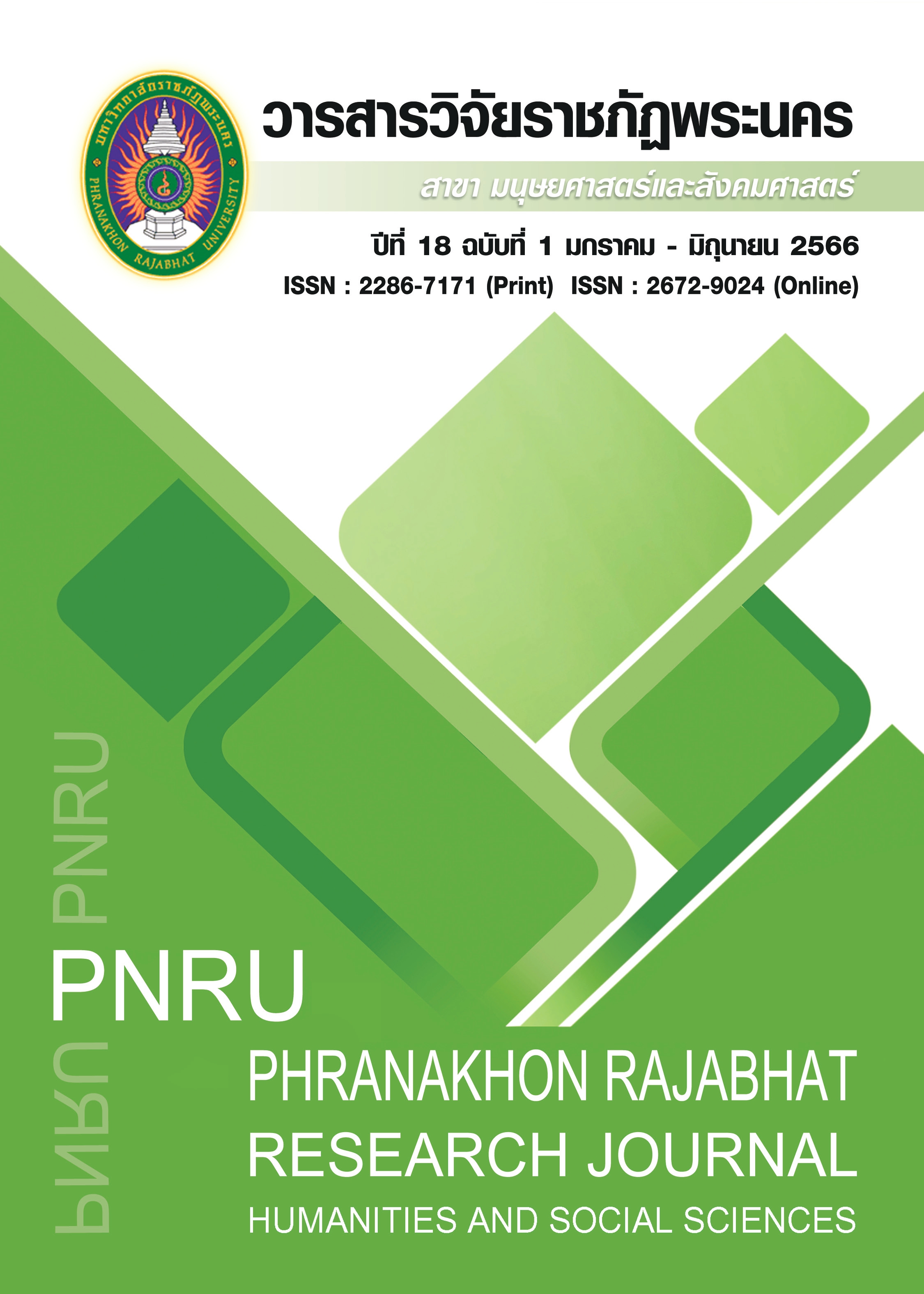LEADERSHIP, ORGANIZATIONAL CLIMATE AND EMPLOYEE PERFORMANCE IN SUB-UNIT OF OFFICE OF THE ATTORNEY GENERAL
Main Article Content
Abstract
The purposes of this research article were to study 1) the level of effect of leadership, which synthesized authentic leadership and inspirational leadership concepts, on employee performance, and 2) the level of effect of organizational climate on employee performance in the sub-unit of the Office of the Attorney General. A quantitative method was applied in this research. The research designs consist of hypothesis testing, correlational studies, cross-sectional descriptive studies, and applied structural equation modeling analysis, and units of analysis are sub-units of the Office of the Attorney General.
The results indicated that 1) the leadership had a statistically significant effect on employee performance, and 2) the organizational climate had a statistically significant effect on employee performance. The results showed that the Office of the Attorney General should enhance and develop leadership, organizational climate, and employee performance.
Article Details

This work is licensed under a Creative Commons Attribution-NonCommercial-NoDerivatives 4.0 International License.
Each publish articles were copyright by Phranakorn Rajabhat University
Any contents which appeared in each articles in the journal were authors personal opinion. It did not relate to Phranakorn Rajabhat University and other instructors in the university. Each authors would take responsibility on their articles. If there are any mistake, the authors will take responsibility themselves
References
Avolio, B. J., Walumbwa, F. O., & Weber, T. J. (2009). Leadership: Current Theories, Research, and Future Directions. Annual Review of Psychology, 60(1), 421-449.
Bass, B. M., & Avolio, B. J. (1994). Improving organizational effectiveness through transformational leadership. Newbery Park, CA: Sage.
Beach, D. S. (1970). Personal: The management of people at work. New York: MacMillan.
Berberoglu, A. (2018). Impact of organizational climate on organizational commitment and perceived organizational performance: Empirical evidence from public hospitals. BMC Health Services Research, 18(399), 1-9.
Borman, W. C., & Motowidlo, S. J. (1993) Expanding the criterion domain to include elements of contextual performance. In: Schmitt, N. and Borman, W. C. (Eds.), Personnel Selection in Organizations, Jossey-Bass, San Francisco, 71- 98.
Bovee, C. L. (1993). Management. New York: McGraw-Hill.
Campbell, J. P. (1990). Modeling the performance prediction problem in industrial and organizational psychology. In M. D. Dunnette & L. M. Hough (Eds.), Handbook of industrial and organizational psychology (2nd ed., Vol. 1, pp. 687–732). Palo Alto, CA: Consulting Psychologists Press.
Chandasuwan, P. (2018). Handout: Qualtitative research methodology. Bangkok: National Institute of Development Administration.
Khoza, N., Chetty, N., & Karodia, A. (2016). Impact of leadership style on employee performance in the forensic science laboratory of the South African Police Service in Amanzimtoti. Kuwait Chapter of Arabian Journal of Business and Management Review, 6(1), 50-76.
Koopmans, L., Bernaards, C.M., Hildebrandt, V.H., Schaufeli, W.B., De Vet, H.C.W., & Van Der Beek, A.J. (2011). Conceptual frameworks of individual work performance: A systematic review. Journal of Occupational and Environmental Medicine, 56(8), 856–866.
Li, Y., & Mahadevan, A. (2017). A study on the impact of organisational climate on employee performance in A Malaysian consltancy. International Journal of Accounting & Business Management, 5(1), 1–13.
Lor, W. & Hassan, Z. (2017). The influence of leadership on employee performance among jewelry artisans in Malaysia. International Journal of Accounting & Business Management, 5(1),14-33.
Ministry of Higher Education, Science, Research, and Innovation. (2022). Leadership, organizational climate, and employee performance. Retrieved from https://tdc.thailis.or.th/tdc/ [2022, 31 Oct.]
Motowidlo, S. J. (2003). Job performance. In Weiner, I. B., Borman, W. C., Ilgen, D. R. & Klimoski, R. J. (Eds.), Handbook of psychology: Industrial and organizational psychology, 12 (pp. 39-53). Hoboken, NJ: Wiley & Sons.
Mowday, R., Porter, L., & Steers, R. (1982). Employee organization linkages: The psychology of commitment, absenteeism, and turnover. New York, NY: Academic Press.
Northouse, P. G. (2000). Leadership: Theory and practice. (7th ed.). Thousand Oaks, CA: Sage.
Obeng, A. F., Quansah, P. E., Cobbinah. E., & Danso, S. A. (2020). Organizational climate and employee performance: Examining the mediating role of organizational commitment and moderating role of perceived organizational support. International Journal of Human Resource Studies,10(3), 223-247.
Obeng, A. F., Zhu, Y., Azinga, S. A., & Quansah, P. E. (2021). Organizational Climate and Job Performance: Investigating the Mediating Role of Harmonious Work Passion and the Moderating Role of Leader–Member Exchange and Coaching. SAGE Open, 11(2). Retrieved From https://journals.sagepub.com/doi/10.1177/21582440211008456.
Raja, S., Madhavi, C., & Sankar, S. (2019). Influence of organizational climate on employee performance in manufacturing industry. Suraj Punj Journal For Multidisciplinary Research, 9(3), 146-157.
Robbins, S. P. (2005). Organizational behavior. (11th ed.). Upper Saddle River, N.J: Pearson.
Shafie, B. Baghersalimi, S., & Barghi, V. (2013). The relationship between leadership style and employee performance (case study of real estate registration organization of Tehran province). Singaporean Journal of Business Economics, and Management Studies 2(5), 21-29.
Stogdill, R. (1974). Handbook of leadership: A survey of theory and research. New York, NY: The Free Press.
Stringer. (2002). Leadership and Organizational Climate. New Jersey: Prentice Hall.
Thai Journals Online. (2022). Leadership, organizational climate, and employee performance. Retrieved from https://www.tci-thaijo.org/about [2022, 31 Oct.]
Ullah, M., Alam, W., Khan, Y., Joseph, V., Farooq, S. U., & Noreen, S. (2022). Role of leadership in enhancing employees performance: A case of Board of Intermediate and Secondary Education, Peshawar. Journal of Contemporary Issues in Business and Government, 28(1), 183-192.
Walumbwa, F. O., Avolio, B. J., Gardner, W. L., Wernsing, T. S., & Peterson, S. J. (2008). Authentic leadership: Development and validation of a theory-based measure. Journal of Management, 34(1). 89-126.
White, D. D. (1991). Organization behavior. New York, NY: Dryden Press.
Williams, L. J., & Anderson, S. E. (1991). Job satisfaction and organizational commitment as predictors of organizational citizenship and in-role behaviors. Journal of Management, 17(3), 601–617.
Yasmin, Z., Santoso, B., & Setiawan, Y. (2020). Authentic leadership and employee performance. Advances in Economics, Business and Management Research,187(1), 633-637.


